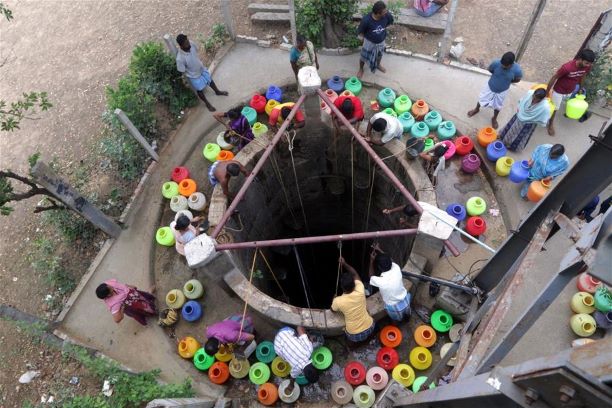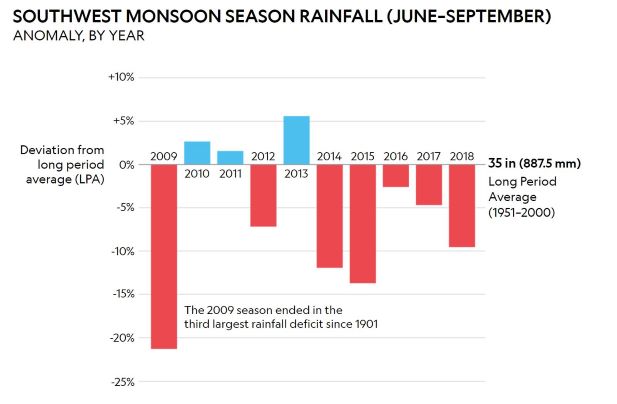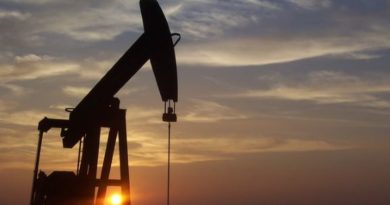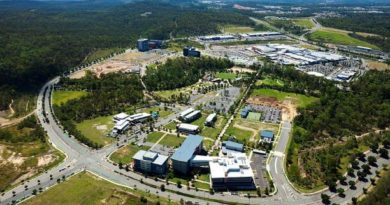India’s Twin Cities Hyderabad & Secunderabad Battle Water Crisis

India’s worst-ever water crisis might cripple the twin cities of Hyderabad and Secunderabad — in the next 48 days. A sluggish monsoon that brought little rainfall in Telangana state, has put its capital — Hyderabad— at the brink of a water crisis. And, it could affect its 6.8 million residents. Since July 1, Hyderabad district witnessed 115.1 mm of rainfall. But it is 29% lower than its normal rainfall, said Telangana State Development Planning Society.
This will be the second city that will be in trouble after Chennai ran out of water, forcing its government to bring in water using train wagons. All the four reservoirs of Chennai ran dry, leaving its residents scrambling for water to drink.
Water levels dropping in Reservoirs
There are two primary sources of water in Hyderabad — the Nagarjuna Sagar reservoir (River Krishna) and the Yellampalli reservoir (River Godavari). Water levels at both these reservoirs are dangerously low, spreading fears of an acute water crisis.
According to data with the Irrigation Department, the Nagarjuna Sagar has a capacity of 126.63 TMC (Thousand Million Cubic feet), which roughly comes up to around 590 feet. Its dead storage level is 510 feet. Data shows that the water level in the reservoir is already at 507 feet and it continues to pump out over 1,000 cusecs (cubic feet per second) – despite little inflow – to meet the needs of Telangana and Andhra Pradesh.
The Yellampally reservoir, where the water level has dropped to 459.25 feet, is seeing an inflow of 472 cusecs against an outflow of 587 cusecs.
However, the Hyderabad Metropolitan Water Supply and Sewerage Board (HMWSSB), which is the nodal agency for supplying water to the city, says that there is no cause for concern, and expects to tide through.
Anaemic Rains
In spite of the rains, there isn’t any freshwater from any of the sources including the twin reservoirs of Osman Sagar and Himayat Sagar. The state authorities are hoping that rainfall in the next two-three weeks can restore the situation back to normal. In case the water level doesn’t rise, the state authorities will have to prepare an emergency action plan that involves pumping out water from reservoirs.
According to the data with the Telangana State Development Planning Society, which recorded the cumulative rainfall from June 1, as of July 14, Hyderabad district witnessed 115.1 mm of rainfall, against the normal rainfall of 161.7 mm, a deviation of -29%.
The districts of Rangareddy and Medchal-Malkajgiri, which also cover large swathes of Hyderabad, Secunderabad and Cyberabad, have witnessed 115.4 mm and 115.5 mm of rainfall respectively against the normal rainfall of 152.5 mm and 177.9 mm, thereby resulting in a deviation of -24% and -39%.

Find local solutions, act soon: Expert
While the HMWSSB is looking at mitigation and plans to tackle water crisis one year at a time, experts warn that a much larger problem looms over the city, which will only get worse with each passing year.
Dr Harish Gupta, Assistant Professor at Osmania University’s Department of Civil Engineering, points out that any region with less than 1,700 cubic meters of water per capita, annually, is considered water-stressed. If the figure is less 1,000 cubic meters, the region is considered to be facing water scarcity.
However, in many cities, including Hyderabad, the figure is less than 500 cubic meters of water per capita.
He attributes this to a variety of reasons: From an increase in population to little replenishment of groundwater aquifers along with the absence of large rivers, which have either ceased to flow or turned into dumping grounds for sewage.
Experts have suggested that authorities, instead of pumping water from faraway reservoirs, should promote local solutions such as rain-water harvesting and recycling of sewage.
“In cities, residents are largely surviving on groundwater only,” says Dr Harish, citing data from a 2016-2017 report by the Central Groundwater Board (CGWB) of India, which reveals that the city had about 1.8 million borewells and most of them were about 300 to 400 metres deep.
Dr Harish also cited data from the Greater Hyderabad Municipal Corporation (GHMC), which reported that during the last four decades, residential areas in the city increased from 10% to 44%, whereas vacant lands reduced from 38% to 2%. The massive decrease in vacant land also results in lesser space for groundwater to be replenished.
“The data shown in the CGWB report, too, is from 2016-17. We may have already consumed what was available. We are going to be in deep trouble in the near future if we don’t take remedial measures soon,” Dr Harish says.
Nation-wide crisis
The government think-tank NITI Aayog believes that 21 of the country’s major cities will be devoid of groundwater by 2020, affecting 100 million people. It named New Delhi, Bengaluru, Chennai and Hyderabad in its list.
The southwest monsoon, which usually drenches India from June to September, has come ten days late this year, bringing 30 percent less rain than normal for the month of June. Research has also shown that large-scale deforestation affects South Asia’s monsoon, depressing precipitation levels—because fewer trees means fewer leaves transpiring water back to the atmosphere, resulting in warmer and drier conditions.
Water has been a cause for stress in the country. While most cities are in want of water, others are facing an excess. Floods in Assam have displaced a million people and killed eleven as the state continues to face problems. Experts are calling for privatizing water supply as a cost-effective measure that can bring in efficiencies into water management. Mumbai loses 25% of its water to leakage and theft. Similarly, 37% of the water leaks out of Bangalore’s pipelines. While one figure say Hyderabad loses an astounding 168 million gallons of water per day (MGD) which is roughly 30% of the water supplied by the Water Board to the city that gets wasted or is unaccounted for due to illegal connections.




